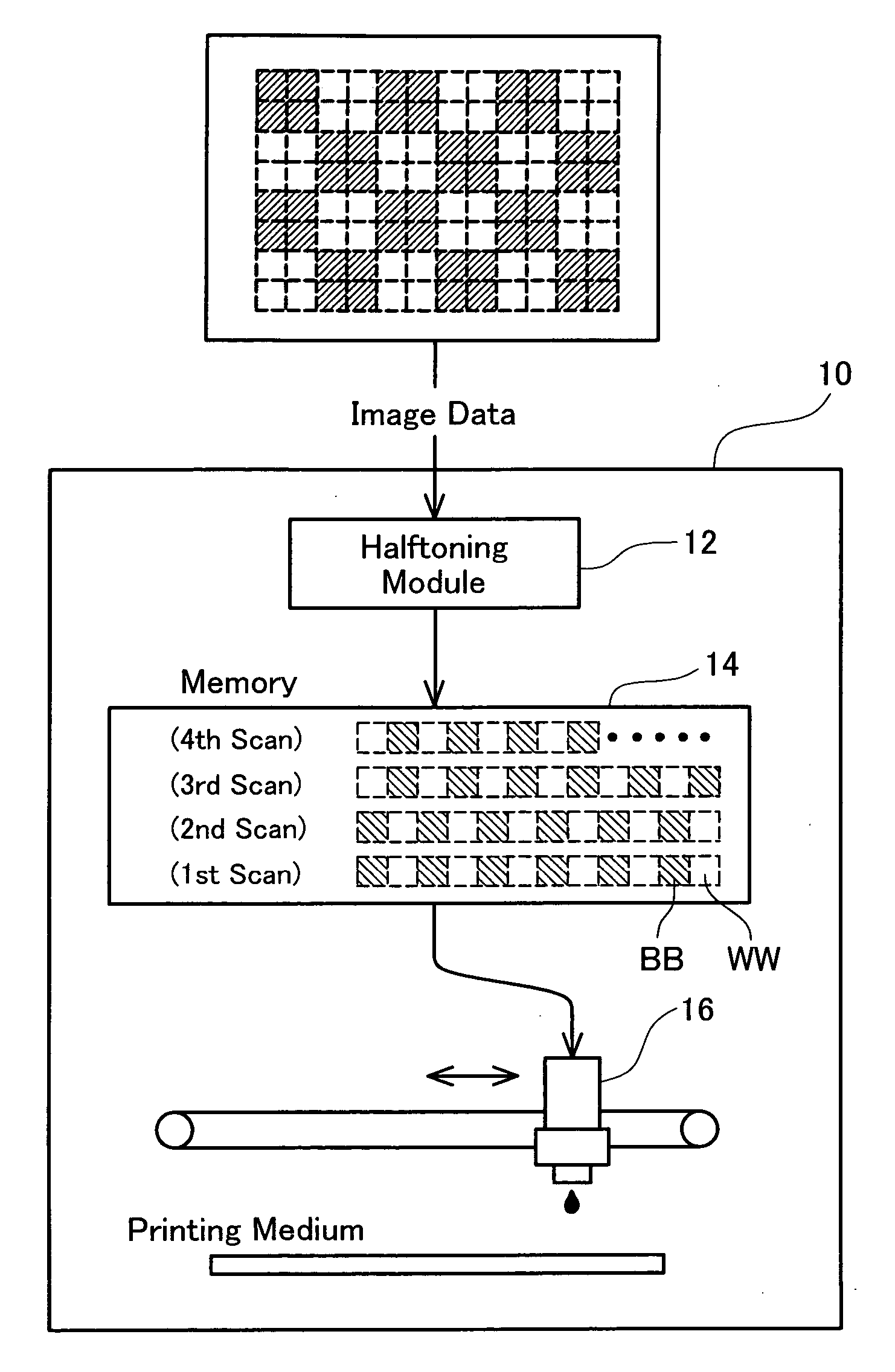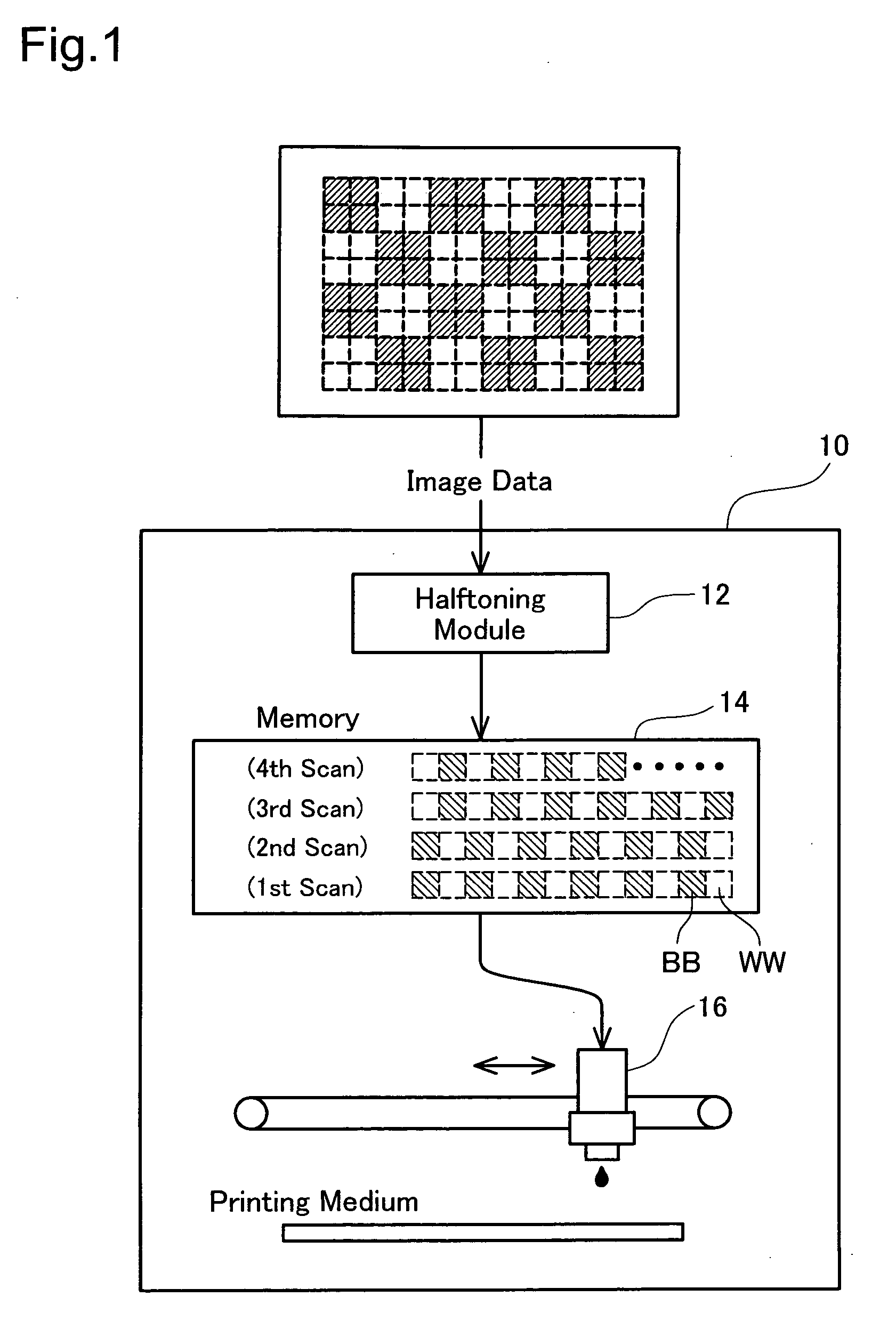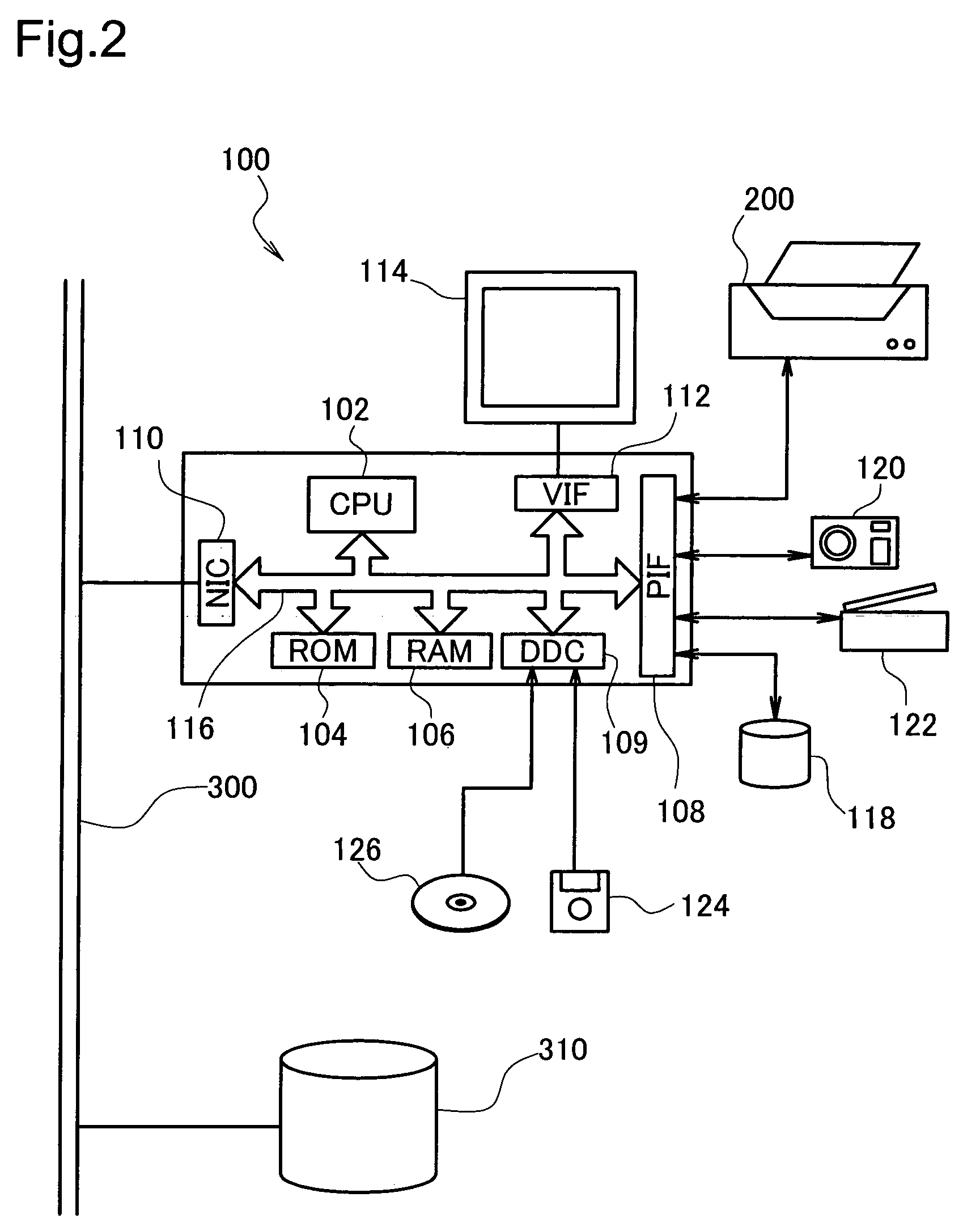Printer for printing an image according to presence/absence of dot formation and printing control device thereof
- Summary
- Abstract
- Description
- Claims
- Application Information
AI Technical Summary
Benefits of technology
Problems solved by technology
Method used
Image
Examples
first modified example
(1) FIRST MODIFIED EXAMPLE
[0117] The printer of the embodiment can take one of the two states, that is, the dot-on state or the dot-off state, in each pixel. Some known printers may, however, have a greater number of different states selectable for each pixel, for example, by varying the dot size or the dot density or by creating multiple dots in each pixel. The technique of the invention is also preferably applicable to such printers. For example, in a variable dot printer that varies the dot size in three stages, a small size, a medium size, and a large size, there are four different states of dot formation, ‘no dot formation’, ‘formation of small-size dot’, ‘formation of medium-size dot’, and ‘formation of large-size dot’. The determination result of each pixel given by the halftoning process is accordingly expressed as 2-bit data (4 tones) to represent one of these four different states.
[0118]FIG. 17 shows four different states of dot formation expressed as 2-bit data. As shown...
second modified example
(2) SECOND MODIFIED EXAMPLE
[0121] In the above embodiment and the first modified example, the number of passes is fixed to an identical value in one image. One image may be printed with a change in number of passes. The principle of the invention is also preferably applicable to this printing system as described below as a second modified example.
[0122]FIGS. 19A and 19B conceptually show a process of printing an image with a change in number of passes. In an illustrated example of FIG. 19A, rasters of one image are printed with a change in number of passes between ‘2’ and ‘3’. In a comparative example of FIG. 19B, all rasters of one image are printed with a fixed number of passes ‘2’. For the better understanding of explanation, the description first regards the comparative example of FIG. 19B where every raster in an image is formed by two passes.
[0123] The printer 200 creates dots on printing paper in each main scan of the ink ejection heads 244 through 247 to form rasters and s...
PUM
 Login to View More
Login to View More Abstract
Description
Claims
Application Information
 Login to View More
Login to View More - R&D
- Intellectual Property
- Life Sciences
- Materials
- Tech Scout
- Unparalleled Data Quality
- Higher Quality Content
- 60% Fewer Hallucinations
Browse by: Latest US Patents, China's latest patents, Technical Efficacy Thesaurus, Application Domain, Technology Topic, Popular Technical Reports.
© 2025 PatSnap. All rights reserved.Legal|Privacy policy|Modern Slavery Act Transparency Statement|Sitemap|About US| Contact US: help@patsnap.com



